Life in LondonAfter 7 years in London, living in zones 1,2 and 3, north and south of the river, and east and west of Charring Cross, I thought it was about time I summed up my experiences of living in the city. It's obscenely expensive, and an echo chamber for metropolitan elitism that bears little to no resemblance to the rest of the UK. It can be cold, grey and miserable - and it is nothing but a giant monopoly board for the privileged few who buy property to launder their money, and then let it sit empty while rent prices go through the roof for everyone else. But it is also creative, energetic and lively and with something for everyone. It has architecture that will make your jaw drop, history that will immerse you, and open spaces that'll make you forget you're in one of the world's most powerful cities. You could live here all your life, and by the time you figure it out, the city has changed again. It's a city you can love and hate in equal measure - but there is nothing quite like it anywhere else. The draw of LondonThe UK isn't unique in having a capital city that is also the largest city, but the size of London compared the other cities in the UK is pretty rare. London is seven times bigger than the UK's second city (Birmingham), and economically the gap is even bigger. When it comes to jobs in finance, law or anything with an international dimension, London is not only the largest player in town, but for Brits, it's the only player in town. Growing up, I always knew that if I wanted to "make it", I'd probably have to spend at least a little bit of time in London, and as I worked my way into adulthood, I realised that it was almost an inevitability. I make it sound bad, and it isn't necessarily true. After all, we have on our doorstep a city that people from all over the world visit, live and work. It's one of only two Alpha++ cities in the world and has everything you could want or need in a city. London's museum game is untouchable (the spoils of Empire will do that), it's multicultural on a whole different level with people from all over the world, and it is always at the cutting edge of the cultural zeitgeist - what's cool in London tends to become cool in the rest of the country and globally at some point. For a city as built up as it is, London has a lot of green space, and it's 2000+ years of continuous history make it a historical gem with architecture dating from the Roman period all the way to modern and quirky skyscrapers. It's a city that never stands still - a building might be a popular nightspot, restaurant or activity centre, and a couple of years later it's probably something completely different. In my 7 years in London I discovered, lost and rediscovered so many places because the city is always changing. A place I considered my go-to for an evening tended to last on average a couple of years - inevitably it would close and make way for something new and different - and that's pretty cool. But there are things to consider. Firstly, London is not a British city, it's a global city. It has more in common with Singapore and New York than it does to Birmingham and Manchester. If you visit the UK but only spend time in London, you haven't really visited the UK. It's a city where only the global rich can live comfortably. Secondly, if you have family in London (for example you grew up there), you're automatically better off than the thousands who move to London from across the UK. When I moved to London in my 20s, several people my age working with me were able to save money by living with their family. For everyone else, we have no choice but to either pay London rent, or spend money travelling between cities (which for me, cost the same as London rent). And London rent is insane - without wanting to date this article for future readers - you're looking at roughly £1,000 per month if you want a flatshare within a short commute from work - and even further out you're never paying less than £600 a month to share a flat. A billionaire's playgroundThe truth is, London is becoming nothing more than a billionaire's playground (and here are a few reasons why I'm not a fan of billionaires). Houses in prime locations sit empty as they are nothing more than investments for Russian oligarchs, Arab sheiks, Indian entrepreneurs and Chinese tycoons all trying to keep their money in a city that has strong property rights and therefore allows them to keep their money safe. Even your average landlords are likely to be foreign nationals with investment properties in the UK. For example, 2/3 of the landlords I had to deal with were based in other countries; one in Hong Kong and one in Switzerland. It makes property and rental prices in London incredibly steep. As I was considering a move from the Midlands to London, a friend told me not to move unless I was earning at least £40,000 a year as I wouldn't be able to save any money. I moved for much less than that, and he was right, for the first few years I wasn't really able to save much at all - I was basically working for the ability to live in London and not really building a future for myself. Rents are one thing, but the cost of living is another. Everything costs more in London, from your weekly shop to anything you might spend in restaurants, nights out, or even meeting friends. Very quickly you realise that the dream of living in London and always doing cool things is just that - a dream. In order to live in London (and not be a millionaire or the child of a millionaire) you have to ration the amount of nights out, or lunch/dinner dates you have - sure that's true everywhere, but the restrictions begin much quicker in London. That's not to say you can't do things for free, as I explore in this article, there are plenty of parks, museums and other sights you can visit, and I certainly made the most of those, but - unless you're in Zone 1 - even these cost money to commute into. Location, location, location...London is less a city and more a collection of settlements that amalgamated together over the centuries, the City of London is actually one of the smallest cities in the UK (and you can read more about it here). This means that differences between neighbourhoods can be quite stark, and even differences within neighbourhoods can be significant. An example of this was the Grenfell disaster where hundreds were killed in a substandard building located in Kensington, one of the most affluent neighbourhoods in the country. During my time in London I lived in three different areas spanning both sides of the river, east and west, as well as across zones 1-3. Each area had its positives and drawbacks too, but it made me realise the importance of location. In London it's normal to commute to work for two hours each day - in fact a two hour commute might barely get you into zone 3 if you're travelling across the city. I really didn't want to spend so much of my life sitting on a packed train, and looked for something that would take me an hour each day max. I ended up spending my first 4 years in Greenwich, a village like bubble in south-east London straddling zones 2 and 3. Greenwich is probably my favourite place I lived in London, and one of my favourite parts of London. There's plenty to see and do, from the Cutty Sark, to the numerous museums, and the incredible Greenwich Park that provides for the some of best views you're likely to find in London. Importantly, Greenwich gives you a taste of London life without being full-on London. It feels a little like a village on the edge of a large city, rather than just another area of London. A 30-40 minute commute into zone 1 means it's far enough to avoid the constant city rush and it means the area is a bit more like a self-contained bubble. The problem is, despite being further out, it can still be quite expensive for rent, but it does get cheaper as you head toward Deptford and Lewisham. If you want to find out more about my Greenwich experience, you can read about here. After 4 years I switched to north of the river in Poplar, a proper east-end area. Again, the decision was driven by work, with an office move from Canary Wharf to Stratford meaning I was able to commute comfortably to both. Poplar was the opposite of Greenwich, other than Billingsgate Market, there isn't a whole lot to do. My flat was bang in the middle of a large residential estate and the closest place where people were willing to meet was in nearby Limehouse or Canary Wharf. While I enjoyed the relative quiet and the ability to get to work quickly, it really didn't feel like London. I could have been in a large residential estate in almost any city in England. It wasn't all bad though. I really enjoyed the areas around Poplar. Limehouse and Wapping are incredibly beautiful and there's always a new pop-up or cafe opening up. Getting into the city was very easy on the nearby DLR, and areas like Shoreditch and Hoxton didn't feel like epic missions, as they did from Greenwich. My weekly shop was much cheaper, with a nearby Aldi giving me an opportunity to finally spend reasonable money on food, but while the area is seen as less 'desirable' than Greenwich, the increase in rental costs across London meant that after 4 years, it actually cost the same to live in Poplar as it did in Greenwich. I spent a year and a half in Poplar before my landlord decided to sell the flat, and I found myself without a place to live. I quite enjoyed the east-end but looking around Greenwich, Deptford, Limehouse and Wapping, I realised just how quickly rents were rising. I had two choices; either move even further out, or spend a little money and get the full London experience just for a year. I decided to go for the latter. I'd never ventured west of Charring Cross, and always wanted to experience living in a London townhouse. As my salary increased from promotions, I figured spending just a year in the more expensive west-end of London would be a pretty cool experience and decided to make the move. After having lived in the New York equivalent to zone 1 several years before, I decided to go all out and live in London zone 1. It was...interesting. The energy in west London is completely different to the energy in the east. The east is more youthful, creative and lively. The west is refined, conservative and full of tourists. Living on the edge of Hyde Park, I probably should have expected a bit of a change, but walking out of my flat each morning to throngs of tourists was a bigger culture shock than I expected. Every morning I'd be woken up suitcases being rolled through the streets as people walked from the nearby Paddington Station. Everything was more expensive too. I expected rent to be more expensive (it was only slightly more than Poplar), but it was impossible to do a weekly grocery shop for a reasonable price without a car. On the flip side, I had Hyde Park on my doorstep (perfect for early morning runs), I was in walking distance to most museums and tourists sites like Buckingham Palace, the Houses of Parliament and the shopping district of Oxford Street. It was also a dream for transport connections with almost every tube line and a large station (Paddington), all within 10 minutes walking distance. I also have a couple of regrets. I'd always wanted to live in neighbourhoods with their own unique vibe - rather than generic east or west end. In particular, Clapham and Islington were the two areas I wanted to live in but I never got the opportunity. The former was a little too far out for a comfortable commute (although I made a few trips for the nightlife), while the latter was far too expensive. If I ever go back to London, areas like Islington, Wapping, Greenwich and Hampstead (I'm a little older now) are probably the types of neighbourhoods I'd like to live in - close enough to the city for short commutes to key places - far enough to have a local feel away from the hordes of tourists. Public parks and public museumsSo far, I've covered a lot of drawbacks of London, but there are definitely a lot of positives, and as far as cities go, there aren't too many others I would rather live in. Two of London's biggest draws are the public parks and public museums. Despite being one of the biggest cities in the world with a sizeable urban sprawl, London is surprisingly green, and it certainly feels a lot more greener than many other large cities in Europe and North America. This becomes more important when you live in London, rather than just visiting it. Throughout the city there are vast stretches of green space, largely in the form of Royal Park.s (those originally owned by the monarchy and now preserved as open access public parks). There are 8 of them in total, with various other parks that aren't Royal but are still worth visiting (like Holland Park, Hampstead Heath and Primrose Hill). Many of these parks provide for fantastic views of the city, and the dichotomy of open spaces overlooking large skyscrapers never gets boring. Richmond Park is probably my favourite, because after spending 24/7 in the city, the opportunity to escape into a 2000+ acre park in London, filled with animals like deer is pretty special. Greenwich Park is another favourite, although for the opposite reason in that it provides a contrast of a large open green park, with incredibly views over the densely constructed London skyline. You can read about my favourite parks in London here. The parks in London are amazing, but it's the museums where the city really excels. There are around 200 across London, and the vast majority of them are free. It's a double edged sword, on one side they're a great way to discover the shared history of humanity, as well as the history of different parts of the world. However, on the other side, the only reason London is the best city in the world for museums is because of the loot gained during Empire. For now, artefacts and art from around the world remains in the UK, and primarily in London. And for what it's worth, these are available to be viewed for free for anyone that visits and the museums do an excellent job in ensuring the safety and security of these priceless treasures. However, because there are so many treasures in these museums, most of them are kept in secure storage and bought out for special exhibitions. In terms of the museums themselves, there are hundreds of Sikh based artefacts in collections throughout the city, with larger collections at the British Museum and the V&A Museum (which includes the magnificent throne of Maharaja Ranjit Singh). My favourite museum is The Wallace Collection which, among many things, includes the sword of Maharaja Ranjit Singh as well as numerous Sikh weapons from the 17th and 18th centuries. You can read about my favourite museums in London here. Sports and entertainmentThere are no shortage of things to do in London, and if parks and museums aren't your thing, chances are you will find something that it is. The UK is the home for the four of the most popular sports in the world; football, cricket, rugby and tennis - and all are well represented in London. While tickets aren't always easy to find for some of the more popular sports, there are always options. Wimbledon is the most prestigious tournament in the sport of tennis, and tickets can be very hard to come by. You can either try your luck in an online ballot or you can queue up from 5:30am and buy 'on the day tickets' -which is what I did - and it was well worth the early wake up to experience one of the most famous sports locations in the world. Tickets for England games at the iconic Wembley Stadium (football), Twickenham (rugby) and Lords (cricket) are much easier to come by, particularly if the match you want to see isn't a particularly big one. Tickets to games at large football stadiums can also be quite easy to come by (with the exception of Stamford Bridge) and in addition to watching games at Wembley, I've also visited the stadiums of Arsenal, Spurs, West Ham and Fulham. While these stadiums might lack the tradition or the atmosphere of stadiums outside of London, they are worth seeing if you happen to live in the city. You can read about my experience at the last big football tournament England held - and my time at the Euro 2020 final in Wembley Stadium - here. I also really enjoyed the nightlife in London. I've mentioned many times that I try not to promote clubs or bars on this blog, but the truth is, when I first moved out to London I spent a lot of nights around Shoreditch, Old Street and Hoxton with the diverse and lively nightlife that those areas have to offer. For those in their mid twenties to late thirties, these neighbourhoods are the perfect place to socialise and experience the energy and exuberance of the city. There are cool outdoor dining and drinking areas, rooftop bars and restaurants, or quirky venues built around a theme (for example a sport, theatre, films, countries and even colours etc.) If you fancy something a little more laid back, Wapping and Limehouse are beautiful areas with fascinating histories. Located on the banks of the Thames, bars and restaurants here are bit more chilled with a slightly older clientele. It doesn't have to be bars or clubs though, the city has no shortage of fun activities to do after work, from the many crazy golf venues (I went to them all), to places to listen to music and play ping pong (another favourite of mine), pool, board games or 1990s-like arcades. And these cool places are spread across the city although most of my favourite neighbourhoods for after work relaxing are in the east; particularly around the areas of Hackney Wicks, Shoreditch, Hoxton and Old Street. Areas south of the river like Deptford and Clapham are also really fun for nights out. The things is, there is something for almost everyone. If you drink, London offers bars that cater for people looking for something glamorous, or something fun and quirky. If you don't drink, London has all sorts of activities, from bootcamps, football teams and running clubs outdoors, to bookclubs, games nights (board and video) and language groups. You can join architectural tour groups or tour groups that focus on the history of the city. Even the food is pretty amazing. This isn't the London you might of heard about if you're from abroad - the London of 2021 has incredible cuisine from around the world. It is particularly good with food where there are large immigrant groups in the city - but I came across food that I'd never ever heard of before I moved to London History and architectureLondon has been continuously inhabited for over 2,000 years, and successive waves of people have all left their mark on the city. What's more, London was one of the earliest cities in the world to understand the importance of preserving history and so has a rich history you can experience today. When visiting London, you can see some of the more famous tourist attractions that mark the passage of time - from the Roman Walls, to the Tower of London built by the Normans, all the way to the Victorian era Houses of Parliament. But you can only ever scratch the surface. When you live in the city you get the time and knowledge to visit the places that are less well known but tell important stories. It was fun over the 7 years I was there to try and find the oldest pub in London (there are at least half a dozen that claim to be). I didn't visit to drink, but to see and explore the history of public houses dating back half a millennia. Then there are the blue plaques. These showcase famous people that have lived in houses around the capital - and they are absolutely everywhere. Some of the most unassuming buildings in the city might have been home to world famous philosophers, authors, leaders, scientists and world changing individuals. It's this long history combined with efforts at preservation that give London one of the most unique and beautiful architectural styles in the world. Within the space of a single street you can go from Georgian townhouses to glass skyscrapers. The areas west of Charring Cross have most of the stereotypical London townhouses, with neighbourhoods like Bloomsbury, Holland Park and Kensington being particularly concentrated. Meanwhile, newer build glass skyscrapers can be found around Vauxhall in south west London, as well as areas east of Charring Cross - in particular the City, Aldgate and Canary Wharf. What's more is that because London is a collection of settlements, rather than a planned city, each neighbourhood feels completely different to the one adjacent. You can go from a working class estate to the most expensive real estate in the world within minutes, London is also home to some of my favourite buildings, and St Paul's Cathedral probably ranks first. The near 400 year old cathedral is one of the most impressive pieces of architecture you are likely to see anywhere in the world. In fact, it's so good, there are zoning laws in place around the capital to ensure that certain views of the cathedral remain unobstructed. And while I'm not a fan of Oxford Street or Regent Street as places to hang out, at night, the buildings that lines those roads are some of the most aesthetically pleasing in the world. North of city in areas like Hampstead you can see slightly larger houses, although the cost of property here is obscene. The area is greener and more open, but overlooks the London skyline and is home to many famous celebrities. But the most expensive property is around the Kensington and Holland Park areas where almost all houses are in the tens of millions. While they are beautiful areas to walk through, most houses sit empty as nothing more than real life piggy banks for the global elite. I'm also a fan of the crazy skyscrapers in the City, and the Gherkin is probably my favourite. They all have crazy names in this area (like the Cheesegrater or the Walkie Talkie), but the Gherkin (officially 30 St. Mary's Axe) is the original and still the best. Frustratingly, the desire the build ever higher means that views of the Gherkin are now heavily restricted thanks to the presence of taller skyscrapers around it. The Shard is the tallest building in London (with great views from the top), but you can save your money and buy free tickets to see the best views in London from the top of Walkie Talkie (called the Sky Garden). Slightly to east, the areas of Canary Wharf - and more recently, Stratford - also have plenty of bold and exciting skyscrapers - although these pale in comparison to places like New York (and you can read about my favourite New York skyscrapers here), and Hong Kong (which you can read about here). Getting aroundAll the other things are great if you want to visit London, but to live in London the city has to be functional, and this is an area where it does incredibly well. Public transport in London is phenomenal. Perhaps the best part of London's transport network is the underground system - the world's oldest and one of the most extensive. While it isn't cheap, underground trains are relatively clean, modern and reliable. The only drawbacks are that the lack of air conditioning can make summer journeys on some lines (particularly the Central) almost unbearable - and the age of the subway system means that there aren't any 'spare' lines - so if a train breaks down on a line, the knock-on effects can be substantial. When things go wrong, the underground system doesn't cope very well, but when it is running smoothly, it is infinitely better than equivalents in New York, Washington, Paris and most other western cities - even though most lines don't run 24/7. It heavily favours the north and west sides of London, but other lines including the overground and DLR make up up for it in south and east London. In fact, the overground lines have some of the more comfortable and spacious trains stocks with air conditioning on trains. The bus network is underrated and serves an important purpose in the city. While some Asian cities match (or exceed) the London Underground system, the bus network in London is probably the best in the world. While London traffic can make buses a slow way of getting around the city, they are relatively cheap and complement the Underground network by serving areas of London where the Underground doesn't extend, and providing alternative options where the Underground does run (particularly important if there's a strike, or technical problem on the trains). There are also night buses throughout the network, which connects the city at night and is full of revellers after midnight on any given night. They're also a great way of seeing the city. Riding along the top deck of the 15 bus from east London into the City was always a fun way to see famous London landmarks when I lived in Poplar. There are whole interest groups where people look to discover the bus routes that have the most scenic views. While London doesn't have the amount of cycle lanes as many other European cities (and especially Amsterdam, which you can read about here), it's becoming more bike friendly each year - but progress is slow. The city bikes are relatively cheap and available across zone 1 and most of zone 2, making it easy to hop on and ride around the city. I probably made more use of 'Boris bikes' than any other mode of transport during my time in London, riding around large parts of the city, hours on end every weekend, or at night when the Underground closes. A more scenic, but less practical method of getting around the city is on the river - after all the Thames runs through London and has traditionally been the main highway through the city. Today, river taxis serve various stations along the Thames, mainly connecting key tourist and work areas. The boat is a little more expensive, and not the most efficient or practical way of travelling, but that's not to say it doesn't serve an important purpose. On several occasions, during strikes by train drivers, the river taxi has been my commute to and from work. It's definitely the most fun way of getting around London. Too hot in the summer, too cold in the winter London has well earned reputation for having perpetually grey skies, although coming from the Midlands, the climate of the city is a small improvement. In the spring, the beauty of London is on full show, as the green parks of the city come into bloom and skyscrapers shimmer in the clear skies and sun. London is also very pretty in the winter. Christmas lights dot different neighbourhoods, and London in the early evening darkness is something of a glittering jewel. However, what London struggles is the extremes of any weather. If it rains a little too hard, if it's a little too windy, snowy or even sunny the whole city can come to a standstill. It doesn't; take much for the largely Victorian era train infrastructure to come to a stop - but I always find it much worse in the summer. During those few summer months, the underground is borderline unusable. And when you're living in London, this struggle with extreme temperatures extends to housing. If you live in a new build (as I did for roughly 5 of my years in London), summers indoors are a struggle. There is little to no air conditioning in flats and houses, and the warmth of southern England, combined with the additional heat in city centres and the greenhouse effect of being in tall glass buildings can make rooms feel like ovens. During my time in those glass flats, no amount of open windows or doors could stop my room feeling like a sauna. Meanwhile, those beautiful townhouses have the opposite problem. Many of them are over 100 years old and therefore quite draughty. While this is fine in the summer, winter months can be bitterly cold, even with the heating on. What's worse, those townhouses tend to have a lot of cracks and gaps which allow insects, spiders and even mice to find their way in during the cold months. What's a typical week in London like?I'm not sure there is any such thing as 'typical' - different people can afford different lifestyles, and different people will have their own interests. For me, I would spend most of Monday to Friday at work. I worked in both Canary Wharf and Stratford, and both places had enough shops and restaurants that during the week, I didn't really have to go anywhere else. I joined a gym at work and would work out either during my lunch hour or directly after work. I would work long on most evenings, finishing around 8-9pm after which I'd be pretty tired. My commute to work in all three houses was relatively short (between 20 and 40 minutes) but would be substantially longer on the odd occasion there'd be a strike or technical problem. Most evenings I would hang out with my flatmates after work playing Playstation or watching films (first four years), or go home and make myself some food and meditate when I lived on my own for the final 3 years. Flatmates can be hit or miss, but I met a few amazing ones that I know I'll be friends for life with. I tried to cook where I could to save money, but inevitably I'd order out quite a bit, especially if I was working late - and that's the positive about London, you can pretty much get good food long into the night - although it doesn't quite have the 24/7 lifestyle of New York. On some weeks, I might visit friends and do something social in the city - usually on a Thursday - and this tended to be around Shoreditch and Hoxton - but I also enjoyed the skyscrapers in the city with their rooftop hangouts. Some of the places I most liked visiting were things like crazy golf at night, or outdoor dining and drinking venues where there are food stalls from around the world, a little music and usually some quirky theme. Rarely I might go to see a show (like wrestling) or a concert, and countless times I would do one off things which were great experiences but quite expensive to do regularly (like driving ranges, expensive restaurants, or activities like climbing the O2 - which you can read about here). Weekends were a good time to explore the city, and I would spend at least a couple weekends every month trying to discover something new. It might be a museum, a public park, different Gurdwaras, or exploring the architecture and feel of different neighbourhoods. To save money, I'd try and avoid eating out on the weekends, and would try and walk where possible, avoiding public transport and particularly taxis which can be quite expensive. I found that a lot of people I met and hung out with did something quite similar, but that could be because we had similar interests (and so became friends), or because we earned similar amounts of money and were able to certain things and perhaps not others. What's it like for Sikhs?As far as cities go, you won't find too many anywhere in the world that are safer for Sikhs than London. Don't get me wrong, it isn't perfect. On more than one occasion I've had some form of racist abuse thrown at me, and London Heathrow can be sometimes be a bit of a pain to get through if you're a Sikh - but on the whole, you're no less safer for being a Sikh. London is home to one of the largest Sikh communities in the UK (in Southall) while nearby Hounslow has a very large Sikh community too. In the east, towns like Ilford and Barking have sizeable Sikh communities, while Slough and Gravesend are just outside the M25 on each side of London - both with large Sikh communities. Within London, Southall is probably the most famous Sikh area and is known locally as mini Panjab. It's full of Panjabi businesses, restaurants and a hub of Panjabi culture. The annual Southall Nagar Kirtan is one of the largest in the world (outside of the subcontinent), and it's also home to Havelock Road Gurdwara - one of the largest Gurdwaras in Europe (and I'll be writing about Gurdwaras in London in a separate article). It's also a good city to find out about other people and cultures given the huge amount of diversity. I met people from all over the world, some of whom had never met Sikhs before. It's one of the things that I really love about London - it's so big that things we take for granted could be completely different to the person travelling home next to you or working on your floor at work. It's what makes London an incredible place to live and work. I'm glad I got to spend a sizeable time in the city, and chances are I'll probably return at some point for another stint. I'm also sure that when I do return, the city will have changed immeasurably, as it did continuously through my time there. But there are also good reasons for taking a break from London. It operates on a different sphere compared to the rest of the country. Prices are extortionate, and the amount of empty houses owned by overseas landholders as investment vehicles is one of the most frustrating things about it. London is - whether it wants to admit it or not - a city flush with dirty money. It also breeds a certain type of arrogance I'm not too fond of. People are largely liberal, progressive and open-minded, but there seems to be a self-righteousness that borders arrogance - even in the most reasonable looking people. They seem to treat being in London as a 'personality'. I'm not saying that is true of everyone, and I met some of the best, most down-to-earth, humble people I'm ever likely to meet - but I couldn't escape the feeling that others felt that being in London made them better. This doesn't extend so much to the suburbs outside zone 1 and 2, and it isn't something you're likely to pick up just by visiting. But this is true of most global cities (you can read about my experiences living in New York here) and it's not just a uniquely London problem. That being said, I found the positives to outweigh the negatives, and it's still one of the best cities in the world to live and work. After all, in 1777, Dr. Samuel Johnson wrote that "when a man is tired of London, he is tired of life, for there is in London all that life can afford" - and it's an observation that remains true today. Comments are closed.
|
AuthorBritish Sikh, born in the Midlands, based in London, travelling the world seeing new cultures. Categories
All
|

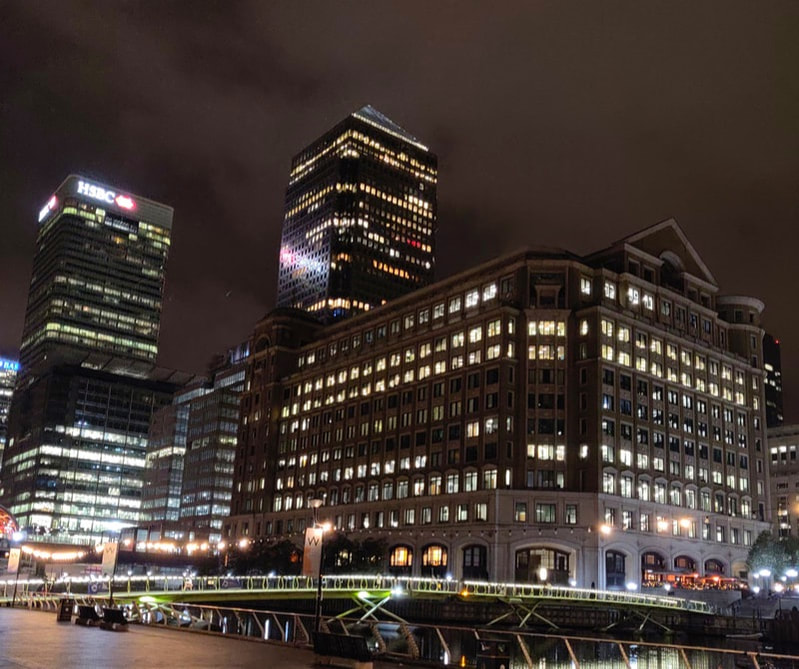
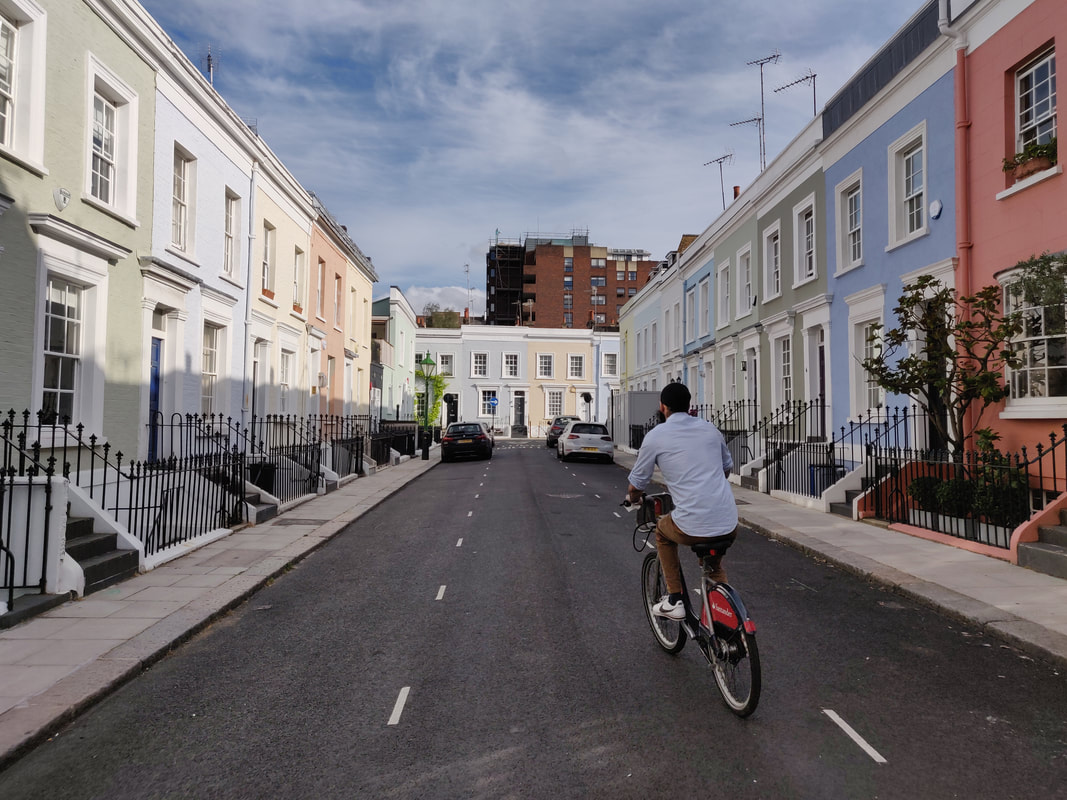

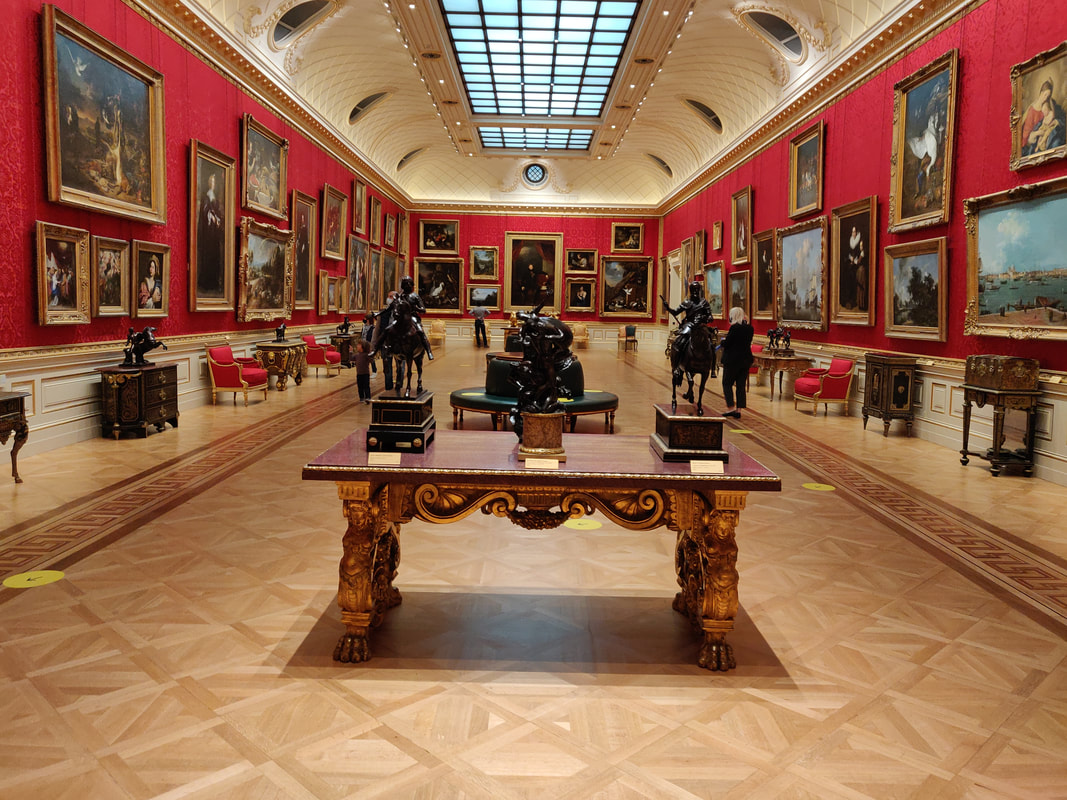
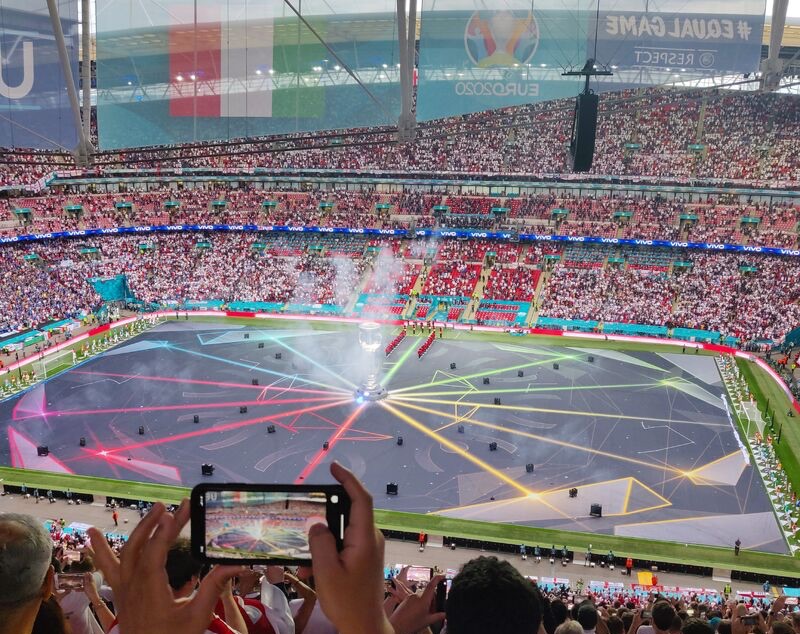
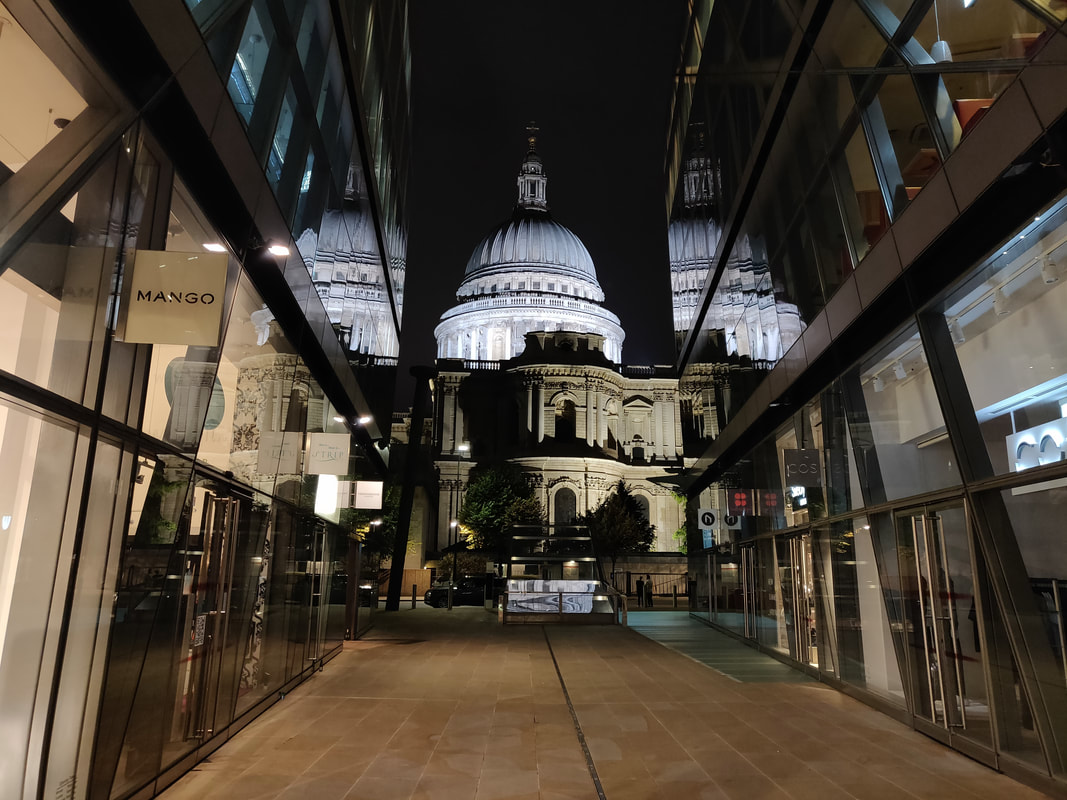

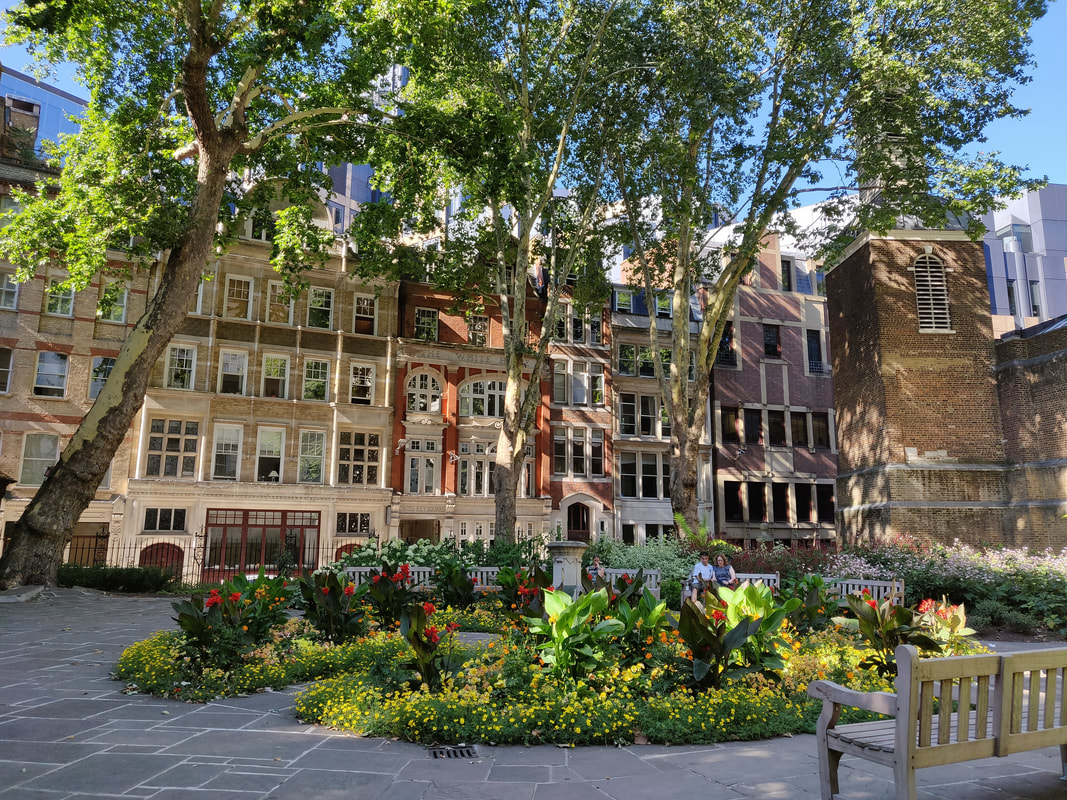
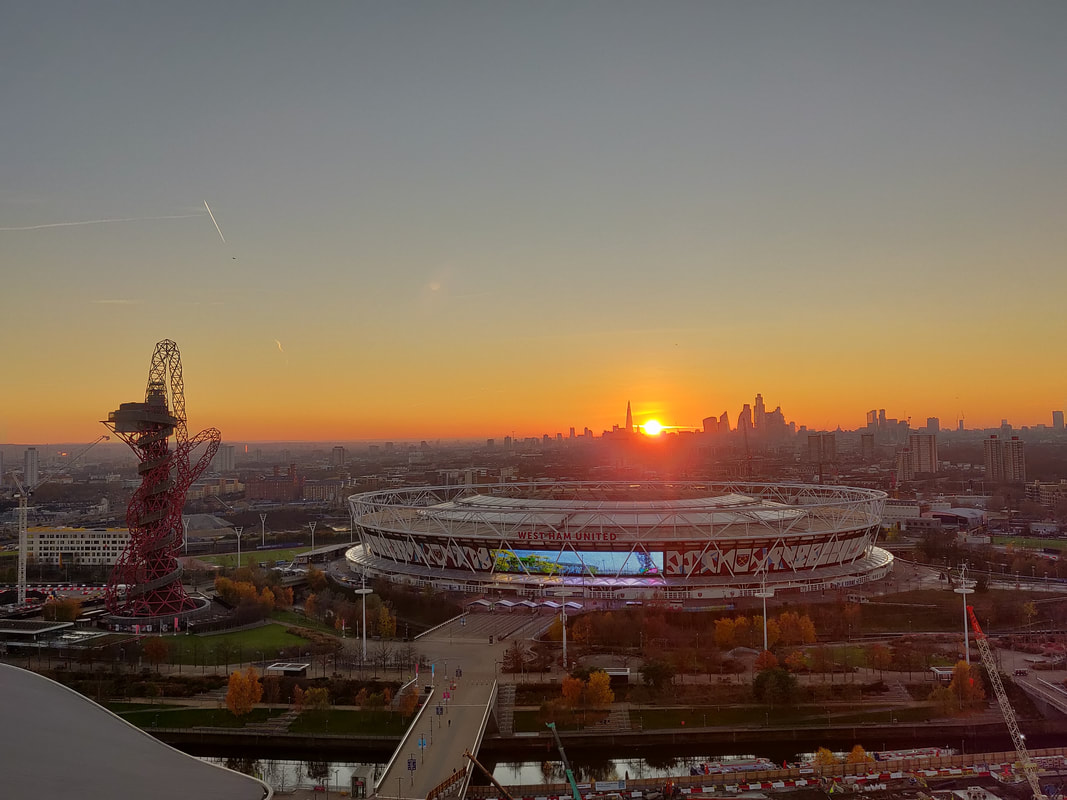
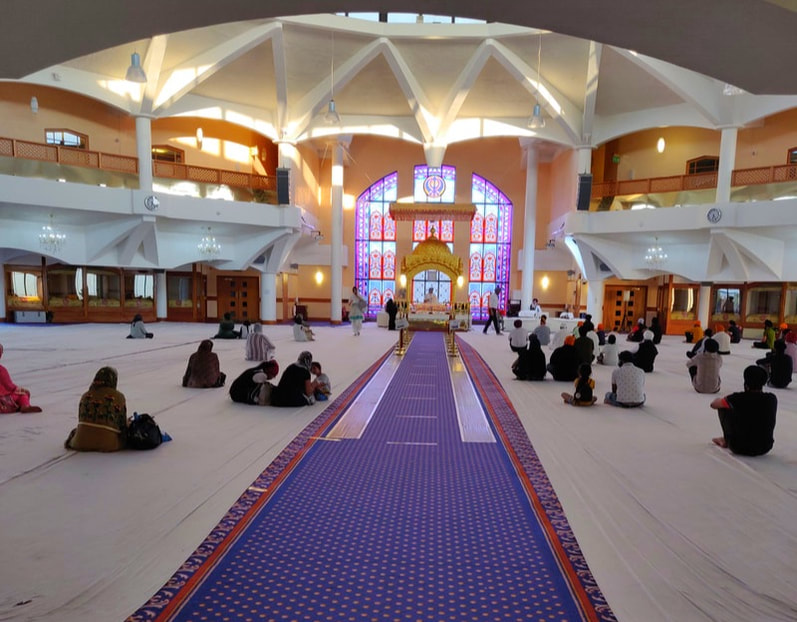

 RSS Feed
RSS Feed